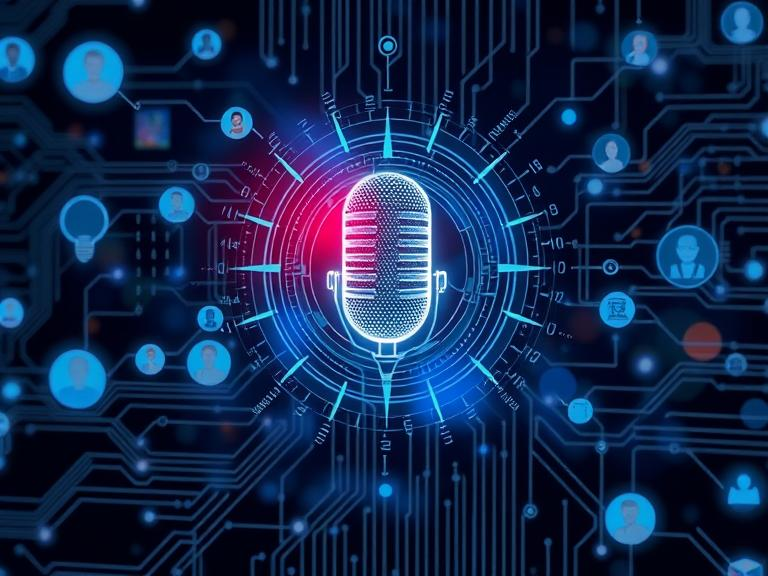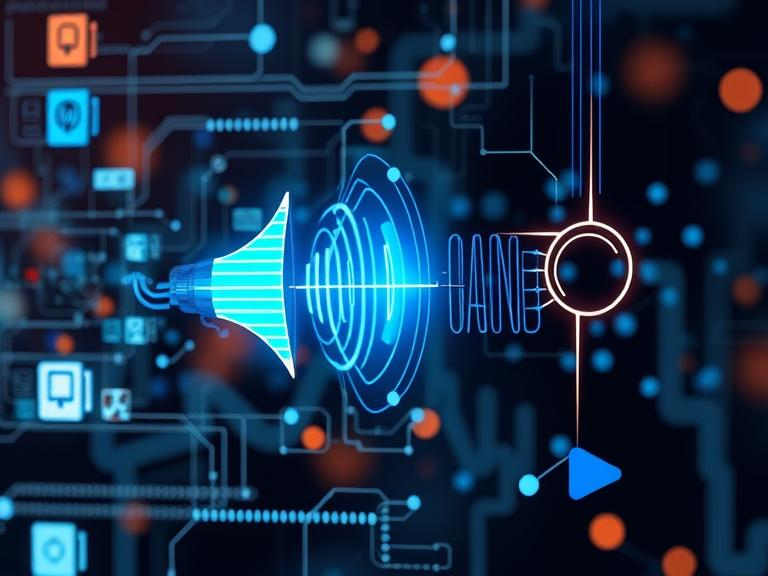Speech Recognition in Business: Revolutionizing Communication, Productivity, and Security

Introduction
In today’s increasingly digital and data-driven world, businesses are adopting innovative technologies to improve communication, productivity, and customer service. One such ground breaking technology is speech and voice recognition. This technology, powered by Artificial Intelligence (AI) and machine learning, allows machines to understand and respond to human speech, transforming how businesses interact with customers and process information.

From enhancing customer support with voice-activated bots to streamlining internal operations, speech and voice recognition are quickly becoming integral tools for modern enterprises. In this comprehensive guide, we will explore how businesses are using speech and voice recognition, the advantages it offers, and what the future holds for this powerful technology.
What is Speech and Voice Recognition?
Speech recognition is the ability of a machine or program to identify words and phrases in spoken language and convert them into text. Voice recognition, on the other hand, focuses on identifying the speaker rather than what is being said. Both technologies use natural language processing (NLP) and deep learning algorithms to improve accuracy and performance over time.
While often used interchangeably, these two technologies serve different business purposes. Speech recognition is valuable in automating transcription services, enabling voice search, and streamlining dictation. Voice recognition is more commonly used in security systems, personalization features, and user authentication.
Key Business Applications
1. Customer Service Automation
One of the most popular applications of speech recognition in business is in customer service. Voice-enabled virtual assistants and chatbots can handle thousands of inquiries simultaneously, providing 24/7 support without the need for human agents. By understanding and processing natural language, these systems can resolve common issues quickly, freeing up human agents to handle complex cases.
2. Voice-Powered Search Engines
As consumers increasingly use voice commands through devices like smartphones, smart speakers, and virtual assistants, businesses are optimizing their content for voice search. This helps brands stay competitive in the search engine landscape and ensures their products and services are discoverable via voice queries.
3. Transcription and Documentation
Speech recognition is widely used for automated transcription in industries like legal, medical, and media. Businesses save time and reduce errors by converting spoken meetings, interviews, and consultations into accurate text. This not only aids in record-keeping but also improves accessibility and compliance.
4. Security and Authentication
Voice biometrics allow businesses to identify and authenticate users based on their unique voice patterns. This method of security is especially valuable in sectors like banking, telecommunications, and healthcare, where identity verification is critical. It adds an extra layer of protection while offering a seamless user experience.
5. Enhancing Productivity and Workflow
Many organizations use voice recognition software to facilitate hands-free note-taking, task management, and dictation. This is particularly helpful for professionals like doctors, lawyers, and executives who need to multitask or work in environments where typing is impractical.
6. Accessibility and Inclusivity
Voice recognition enables more inclusive environments by helping people with disabilities access digital tools. Businesses that integrate these technologies foster better workplace diversity and compliance with accessibility standards.
Benefits of Speech and Voice Recognition for Businesses
- Increased Efficiency: Tasks like note-taking, customer queries, and transcription are automated, allowing employees to focus on strategic initiatives.
- Improved Accuracy: With advancements in AI, modern voice recognition systems deliver remarkable precision, even in noisy environments.
- Cost Savings: Businesses save on labour and time by automating repetitive tasks.
- Better Customer Experience: Quick, intelligent, and personalized responses improve overall customer satisfaction.
- Competitive Advantage: Companies that adopt emerging technologies early gain an edge in customer trust and operational agility.
Challenges to Consider
Despite its many benefits, implementing speech and voice recognition comes with challenges:
- Privacy and Security Concerns: Voice data can be sensitive. Businesses must ensure compliance with data protection regulations like GDPR.
- Language and Accent Variability: While technology is improving, recognizing diverse accents, dialects, and multilingual conversations remains a hurdle.
- Background Noise: Environments with ambient noise can reduce recognition accuracy.
- Integration Costs: For small businesses, initial implementation may be costly and require technical expertise.
Industries Benefiting from Speech and Voice Recognition
1. Healthcare
Doctors use dictation tools to update patient records quickly. Voice recognition allows faster electronic health record (EHR) management, improving patient care.
2. Legal and Compliance
Lawyers rely on voice transcription to record depositions, interviews, and case notes. Automated transcription services help maintain accurate records for compliance.
3. Finance
Banks and fintech companies use voice authentication for secure account access and fraud prevention. They also use AI chatbots to assist customers.
4. Retail and E-commerce
Voice search helps customers locate products faster, and AI voice assistants guide users through the buying process.
5. Media and Entertainment
Journalists and content creators use transcription tools to convert interviews into publishable content. Voice commands also streamline video editing and broadcasting workflows.
6. Manufacturing and Logistics
Workers use hands-free voice commands for inventory management, shipment tracking, and equipment handling, improving safety and operational speed.
Future Trends in Speech and Voice Recognition
- Emotion Recognition: Emerging systems can detect sentiment and emotional tones, offering more human-like interactions.
- Real-Time Translation: Businesses operating globally benefit from tools that translate speech in real time.
- Hyper-Personalization: With user data, voice assistants will deliver more personalized experiences and recommendations.
- Edge Computing: More voice data processing will occur locally (on devices) rather than in the cloud, improving speed and privacy.
Frequently Asked Questions (FAQs)
Modern speech recognition systems have an accuracy rate of 90–95% in ideal conditions. The accuracy may drop slightly in noisy environments or with heavy accents but continues to improve with AI enhancements.
Yes, many enterprise-grade voice recognition systems use end-to-end encryption, secure cloud storage, and voice biometrics to ensure data privacy. Compliance with standards like ISO 27001 and GDPR is also common.
Yes, there are many scalable and affordable options tailored for small businesses, such as cloud-based voice recognition platforms and subscription-based transcription services. These tools allow businesses to get started with minimal investment.
Conclusion
The integration of speech and voice recognition into business operations is no longer a futuristic concept—it’s a competitive necessity. From enhancing customer service to improving internal documentation and security protocols, these technologies offer transformative benefits. Despite certain challenges, the pace of innovation continues to bridge performance gaps.
As more businesses recognize the potential of voice-driven solutions, we can expect greater innovation and adoption across all sectors. Staying informed and proactive in integrating these tools will help businesses remain efficient, secure, and customer-focused in the digital age.
By understanding the many ways speech and voice recognition can be applied, organizations of all sizes can begin to harness the power of human-to-machine interaction—and shape a smarter, more responsive business landscape.
